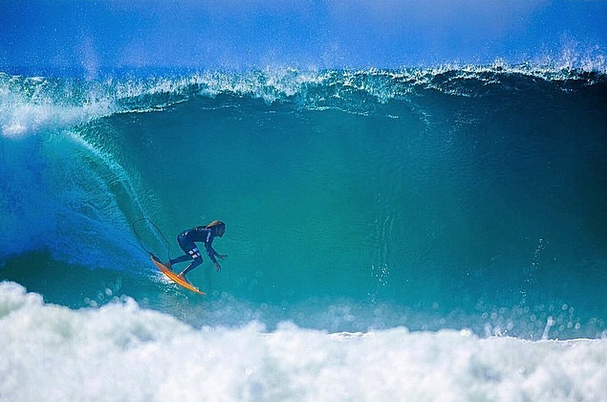
A group of surfers from the University of San Diego have just made a potentially massive leap forward in the realms of sustainable surfboard manufacture by creating a board with a core made out of algae.
Yep, that slimy green stuff that you get in badly kept fishponds (or on the side of your bathtub if you’re really grubby) can apparently be used to get rad.
As surfers you are totally immersed in the ocean environment. But your connection to that environment is through a piece of plastic made from fossil fuels…
The team, led by biology professor Stephen Mayfield, teamed up with Arctic Foam, North America’s largest maker of surfboard blanks to create the board. They also roped in legendary pro surfer Rob Machado to help them with the project.
Surfboard cores are currently made exclusively out of polyurethane, a plastic derived from petroleum which has a pretty high carbon footprint. But as Mayfield explained to Phys.Org: “Petroleum is algae oil. It’s just fossilized, 300 million to 400 million years old and buried deep in underground.”
The algae expert, who has been surfing himself for 45 years, worked with a chemistry professor as well as his students to find a way of extracting the oil from algae and turning it into a chemical compound that behaves almost exactly like polyurethane.

“As surfers, more than any other sport you are totally connected and immersed in the ocean environment,” Mayfield said. “And yet your connection to that environment is through a piece of plastic made from fossil fuels.”
“This shows that we can still enjoy the ocean, but do so in an environmentally sustainable way.”
And while the other aspects of this initial board were not produced completely sustainably, they could easily be, according to Mayfield.

“In the future, we’re thinking about 100 percent of the surfboard being made [sustainably] – the fiberglass will come from renewable resources, the resin on the outside will come from a renewable resource.”
It remains to be seen whether a board maker will start manufacturing algae-based cores and 100% sustainable boards commercially, but the development points to a bright future for environmentally-friendly surfboard design.
You may also like:
Getting Lost: The Inside Secrets of America’s Biggest Surfboard Factory
Surfing Shrooms: Meet The Men Who Make Surfboards Out Of Mushrooms